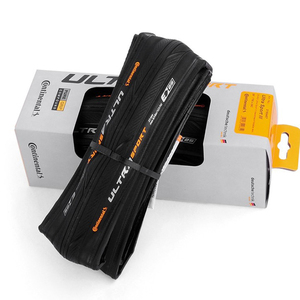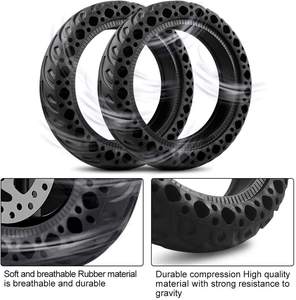(711051 products available)































































































































































































































All-terrain tires
These tires in China are designed for both on and off-road driving. They are made to last for a long time. They can handle different kinds of weather and roads, like dry, wet, or snowy places. All-terrain tires are great for trucks and SUVs that need to drive on highways and rough roads. They are not too noisy when driving fast on highways. When going off the road, the tires have enough grip. They can do well in light snow but are not the best in very snowy places. These tires offer a good balance between on-road and off-road performance.
ATV tires
ATV tires are made for all-terrain vehicles. ATVs are great for going on trails, racing, and using on farms. The tires are designed for different kinds of ATVs. For example, some tires are for sporty ATVs that need to go fast and turn quickly. Other tires are for work-based ATVs that need more strength and carrying ability. The tires' tread patterns are made to give the best grip for different uses, whether on dirt, mud, or hard surfaces. The tire sizes and types are chosen to fit the specific needs of the ATV, making it perform its best in any situation.
Electric vehicle tires
These tires are made for cars that run on electricity. They are usually energy-efficient because they help the car use less electricity. This means the battery can last longer, and the car can drive further on one charge. The tires have low rolling resistance, which is good for energy savings. They also have good grip and handling because EVs are often heavier due to their batteries. The tires need to provide stability and strength. While they focus on energy efficiency, these tires also have good performance in wet and dry conditions.
Winter tires
Winter tires in China are made to work well in very cold places. They have special rubber that stays soft and grips the ground when it is chilly. The tire tread has deep grooves and biting edges that help with traction on snow and ice. The tires are also designed with a unique pattern to reduce hydroplaning on slushy roads. They offer a good grip on wet and slippery winter roads. Winter tires are available in various sizes and types to fit different vehicle models. This ensures every car can change to winter tires for safety and performance in the colder months.
Racing tires
These are high-performance tires designed for speed and control on the racetrack. They are made from special rubber compounds that provide maximum grip on dry surfaces. This helps prevent the car from skidding at high speeds. The tread patterns are minimal or completely slick, reducing contact with water and improving traction on dry tracks. Racing tires are available in different heat ranges, suitable for different track temperatures. They also come in various compounds, like soft for maximum grip or harder for durability. This ensures they meet the needs of professional teams and amateur racers.
Tire specifications are important for several reasons. They help to make sure that the right tires are purchased for a given car. The specifications are also used to make sure that the tires are properly maintained.
Size:
The size of the tire is important for the operation of the car. The size is printed on the sidewall of the tire. It consists of three numbers and two letters. The numbers represent the width, aspect ratio, and diameter. For example, a tire with the specification 205/55R16 has a width of 205 mm, an aspect ratio of 55%, and a diameter of 16 inches. Tires with the correct size improve handling and braking. They also make sure that the speedometer is accurate.
Tread pattern:
The tread pattern affects the traction and noise level of the tire. There are different types of patterns, such as symmetric, asymmetric, and directional. A symmetric pattern has the same design on both sides and the center of the tire. It wears out evenly and is suitable for all driving conditions. An asymmetric pattern has different designs on the outside and inside of the tire. It provides better grip and stability. A directional pattern is designed to rotate in one direction. It improves wet traction and reduces hydroplaning.
Load index and speed rating:
The load index is a number that indicates the maximum weight that the tire can support. The speed rating is a letter that shows the highest speed that the tire can perform safely. Tires with a high load index and speed rating are required for heavy and fast cars. For example, an SUV tire has a load index of 120 (1,000 pounds) and a speed rating of H (130 mph).
Tire maintenance is important to ensure safety and performance. The following are some tips for maintaining tires:
Check the pressure:
Proper inflation is important for fuel efficiency and tire wear. The pressure should be checked once a month and before long trips. The tires should be replaced with the correct size and type for the car.
Inspect the tread:
The tread depth affects the traction and stopping distance of the tire. A worn tread can cause hydroplaning and skidding. The tread depth should be measured with a gauge or a penny. Tires with a shallow tread should be replaced.
Look for damage:
The sidewall and tread of the tire should be checked for cuts, punctures, cracks, and blisters. Damage can compromise the strength and safety of the tire. Minor damage can be repaired. However, serious damage requires the tire to be replaced.
Rotate the tires:
The tires should be moved to different positions on the car every 5,000 miles. This promotes even wear and extends tire life. The rotation pattern depends on the type of drive and tire.
Market Research
Research the local market and target audience. Understand the common vehicle types in the area and the preferred tire specifications. This will help source the right-sized tires that meet market demand.
Quality and Brand
Consider the quality and brand reputation when sourcing tires. Well-known brands are generally of good quality and have strict quality control standards. Tires from these brands may be slightly expensive, but they are a good investment in the long run.
Tire Types and Sizes
Different types of tires are suitable for various road conditions and weather situations. For example, all-season tires are good for areas that experience mild weather throughout the year. In contrast, winter tires are specifically made to grip icy roads. Additionally, tires come in different sizes. It is important to source tires that will fit the vehicles that customers own.
Regulatory Compliance
Tires must meet certain standards and regulations. Find out the requirements in the local area to ensure the sourced tires comply. This will reduce legal liability and ensure customer safety.
Supplier Reputation
Find a reputable supplier with good customer reviews. The supplier should be reliable and deliver the order within the agreed timeframe. Furthermore, the supplier should provide after-sales support.
Price
Compare prices from different suppliers and choose the most affordable offer. However, remember that quality is more important than price. It is advisable to source tires from suppliers whose products meet the quality standard, even when the cost is slightly higher.
Storage and Distribution
Plan how to store and distribute the tires. Ensure there is enough storage space to keep the tires before they are sold. The tires should be stored in a cool, dry place away from direct sunlight. Have a distribution plan to ensure the tires reach the market in good condition.
There are several steps that tire wholesalers need to follow to ensure that they replace tires safely.
Get the vehicle ready
Park the car on a flat surface and engage the parking brakes. The car must be in """"Gear"""" or """"Park"""" if it is an automatic. Ensure that the wheel that is opposite the one being replaced is chocked.
Tire and tools setup
A jack is a lifter that raises the vehicle. A jack stands on its own and is placed under the vehicle to provide additional support and stability. A wheel brace or lug wrench is used to loosen and tighten nuts on the wheel. A locking wheel nut key is used to remove special wheel nuts that secure the wheels to the vehicle. A hammer can be used to tap the tire iron or wheel brace. A tire lever is used to remove the tire from the wheel rim. A bead breaker is used to separate the tire from the wheel at the rim's bead. A torque wrench is a tool used to apply a specific amount of force when tightening nuts and bolts. It ensures that the nuts are tightened to the manufacturer's specifications. A wheel chock prevents the vehicle from rolling.
Remove the old tire
Place the jack under the vehicle according to the manufacturer's instructions. The jack is used to lift the car until the tire is slightly above the ground. The wheel nuts are loosened slightly while the car is still on the ground. The jack is lifted until there is enough space to remove the old tire. The wheel nuts are removed, and the old tire is taken out.
New tire fitting
The new tire is placed onto the wheel hub, and the wheel nuts are hand-tightened. The jack is lifted again until the new tire makes contact with the ground. The wheel nuts are tightened in a crisscross pattern to ensure even pressure. The jack is used to lower the vehicle until it is stable.
Q1: Why are Chinese tires so cheap?
A1: Low production costs contribute to the affordability of Chinese tires. Additionally, some manufacturers may offer lower-quality products to meet budget constraints. Reduced marketing expenses also play a role, as many Chinese tire manufacturers have yet to establish their brands globally. Furthermore, government support and subsidies for manufacturers can impact pricing.
Q2: Do Chinese tires last as long as other tires?
A2: The longevity of tires is influenced by various factors, including driving conditions, tire maintenance, and the tire's rubber composition. While some Chinese-manufactured tires may have lower mileage ratings compared to premium options, there are numerous budget-friendly Chinese tire alternatives that provide comparable durability to well-known budget brands.
Q3: Are Chinese tires of good quality?
A3: The quality of Chinese tires varies depending on the manufacturer and the specific tire model. Many Chinese tire manufacturers adhere to international quality standards and produce tires that are suitable for everyday driving needs. However, it is essential to research and selects reputable Chinese tire brands to ensure adequate quality and performance.
Q4: How do Chinese tires compare to other budget tires?
A4: Chinese tires are often on par with other budget tire brands regarding quality, performance, and durability. Budget tires typically offer adequate functionality and reliability for everyday use but may lack some advanced features found in mid-range or premium tires. It is crucial to read reviews and research to find a trustworthy budget tire brand, whether Chinese or otherwise.
Q5: Do Chinese tires have a good wet grip?
A5: Wet traction varies by tire model and brand. Chinese manufacturers produce tires with adequate wet grip for standard driving conditions. For high-performance vehicles or specific needs, it is advisable to select tires with excellent wet grip and stability at high speeds.